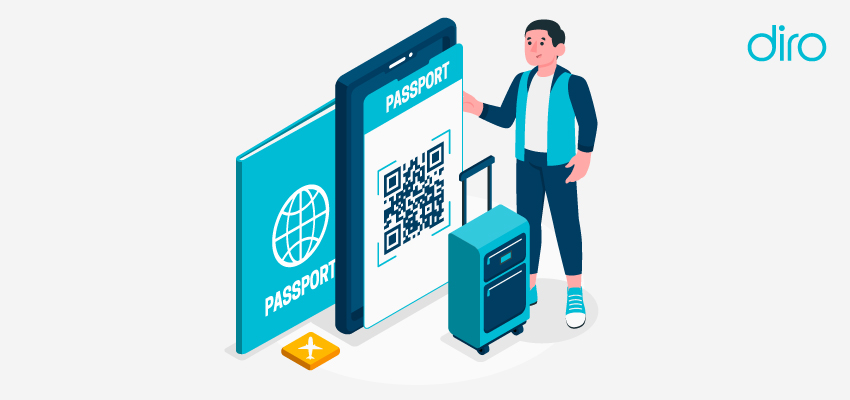Employment Verification: Step-by-Step Guide

There are several instances where companies will be asked or will initiate a request to verify an individual’s work history and other details associated with their current or past employment. This process is known as “employment verification.”
The hiring process is when most companies do verification of employment, and the process includes professional reference checks. Businesses generally receive proof of employment verification requests from third parties. Lenders who receive loan applications, and credit card applications tend to do employee document verification to make sure that the person who’s applying isn’t lying about their employment status.
Mortgage lenders verify your bank statement and also verify your employment by contacting your employer directly and by reviewing the latest income documentation. The borrower has to sign a form authorizing an employer to share their income information with a lender asking about employment verification. At that point, the lender typically calls the employer to obtain the necessary information. There are some steps that you need to take, but there are steps borrowers need to take if they refuse to verify employment.
Businesses can use multiple methods to verify employment, including getting a “proof of employment verification” letter, paystubs, contacting references, or executing contracts and agreements. In this article, we’ve mapped out the main reasons for employment verification, how companies fulfill the requests, and why employment verification is important.
What’s Verification of Employment?
To approve mortgages, banks need to verify employment. The same goes for businesses looking to hire new employees, or banks verifying employment before onboarding a customer.
The mortgage lender needs to check that you are employed where you say you’re employed. They also have to take your level of income into consideration. This confirms that the borrower can bear their down payments, EMIs, and closing costs.
Employment Verification: When is it Required?
Now that online job hunting and professional networking sites like LinkedIn are becoming famous, a CV/Resume is more than enough to verify a person’s employment status. However, many potential verifiers can demand better and more formal certification of employment. This happens mostly when a financial transaction is involved. There are several employment verification documents needed to fulfill the request.
1. Lenders Approving a Loan
Lenders that are reviewing loan applications definitely need to verify an individual’s employment status. This helps them in making sure that the individual can make payments on time. Not just employment, employers can also verify the salary details of an employee if a lender requests so. However, companies should be careful to abide by the local laws. Some locations like the State of California and New York City prohibit employers from divulging salary information during the hiring process, but this doesn’t often affect loan requests. Employment verification methods can differ from business to business, but the end result is similar.
2. Property Owners Issuing a Lease
Similar to loan providers, the employment verification requirements of a property owner are to verify an individual’s employment status to make sure they can make payments under the lease. Financial history is also an important part of completing the process. This can be done by acquiring bank statements from the individual.
3. Employers Hiring New Employees
Before handing out an offer to a new employee, companies often check the employee’s employment history. This is done by contacting the references, which also require formal documentation. This step includes asking for employment verification documents.
4. Work Visa Holders Verifying Employment
To secure a work visa in a country, applicants are required to have secured a job in the country. Similarly, this is necessary during application renewals, if the individual has quit the job or has been let go, the work visa will diminish. Visa holders must inform the office that issues the work permit if they’ve lost their jobs.
Process of Employment Verification
In general, lenders verbally verify the information borrowers share on the Uniform Residential Loan Application. However, they can also choose to get the data via fax, email, or a combination of any number of methods. Lenders use this information to calculate several metrics to determine how likely a borrower is to repay a loan. A change in employment status can have a huge impact on your borrower’s application.
1. Additional Information
Whenever a lender verifies employment, a lender will frequently ask other questions as well. The basic question a lender may inquire about is the type of employment. Lenders are also interested in verifying the position, salary, and work history. Most lenders only verify the borrower’s current employment, some lenders may also want to confirm previous employment information. This practice is more common for borrowers who have been in their current organization in less than two years.
2. Verification for Self-Employed Individuals
Those who are self-employed and take on the mortgage have a different type of employment verification. In this situation, lenders need an Internal Revenue Service (IRS) Form 4506-T. This form is a request for a “Transcript of Tax Return” which allows the lenders to receive a copy of the borrower’s tax return directly from the IRS. In a self-employed situation, the lender may also have to ask for attestation by a Certified Public Accountant (CPA) to confirm income.
Common Employment Verification Methods
Companies should notify an existing or a past employee that they’ve received an employment verification request. This allows companies to make sure that the request is legitimate before providing sensitive details to an unknown party. This is also the first step to learn if you’re wondering how to do employment verification.
1. PoE Letter
A PoE (Proof of Employment) letter is issued by an employer and it acts as a formal confirmation of a current or past employee’s status. PoE letters often include:
- Employer’s business name and address
- The employee’s job title
- Dates of the current/past employee’s employment
- List of employee’s responsibilities
- The employer’s contact information
2. Paystubs
Pay Stubs are often used for employment verification. It provides a record of an employee’s past income from the company. This information is needed when the individual is applying for a loan, mortgage, or credit card. In some locales, providing a customer’s salary information is against the rules and regulations.
3. References
Another method of verifying employment is by contacting the references provided by the individual. A reference can help in providing information about the employee’s roles and responsibilities throughout the organization. The reference (usually a manager) can verify if the individual ever used to work with the organization.
4. Contracts & Agreements
These documents help in proving an employee’s relationship with a company, but most of the contracts and agreements only show that the employee accepted a job offer. One issue with this method is the lack of surety of the individual working with the organization.
5. Third-Party Services
Businesses that need employment verification in bulk tend to use third-party services to reduce stress from internal resources. These third-party service providers complete the employment verification process on a company’s behalf.
What Information is Legal to Share?
Employment verification is a tricky process as the entity may require details that an employer is prohibited from submitting. As a matter of fact, employers can face huge penalties if they fail to abide by the rules. Health and Salary information is the most sensitive employee information that most businesses aren’t allowed to share. Here’s a deeper insight into what information is legal to share.
1. Health Data
Sharing information about an employee’s health isn’t legal in most areas. There is no way to know what a verifier wants to do with the information. Health and physical appearance-based discrimination in hiring is a common practice.
Sharing information about an employee’s disability is a highly frowned upon practice. According to the Americans with Disabilities Act of 1990, sharing information about an individual’s disability is considered illegal.
Hiring employers can confirm whether the person they’re hiring will be able to fulfill the responsibilities of the position they’re being considered for.
2. Salary and Earning History
Certain situations such as loan approval require entities to gain insights into the applicant’s earnings. Several locations such as the State of California and NYC prohibit companies from requesting previous salary information during the hiring process. This rule is set in place to protect an employee from having the salary for a new role compared to the previous compensation.
How to Respond to Refusal to Verify Employment?
Some employers completely deny a borrower’s request for employment verification, but it can be easy to fix this situation in some cases. You need to clearly explain to the human resource manager why you need to verify the employment of the borrower. Some companies will not provide any information without the verbal or written consent of the employee. There can also be state laws that a company has to follow before handing out an employee’s information.
As an employee, you should talk to your employer about this. You can also tell your potential mortgage lender about your organization’s rules and regulations. Some lenders may be willing to process an application without employment verification as another state’s law prevents them from verifying a certain type of information.
There are also some cases where an employer will not verify employment for other reasons. If this clashes with your mortgage application process, then you should start searching for a different job.
Conclusion: Employment Verification
A lot of businesses suffer from employee scams and that’s why it’s essential to verify employee information. In high-risk industries such as the financial industry, employment verification is a need rather than a formality. DIRO online document verification can reduce the verification time by 90% while simultaneously providing court-admissible proof of verification.












